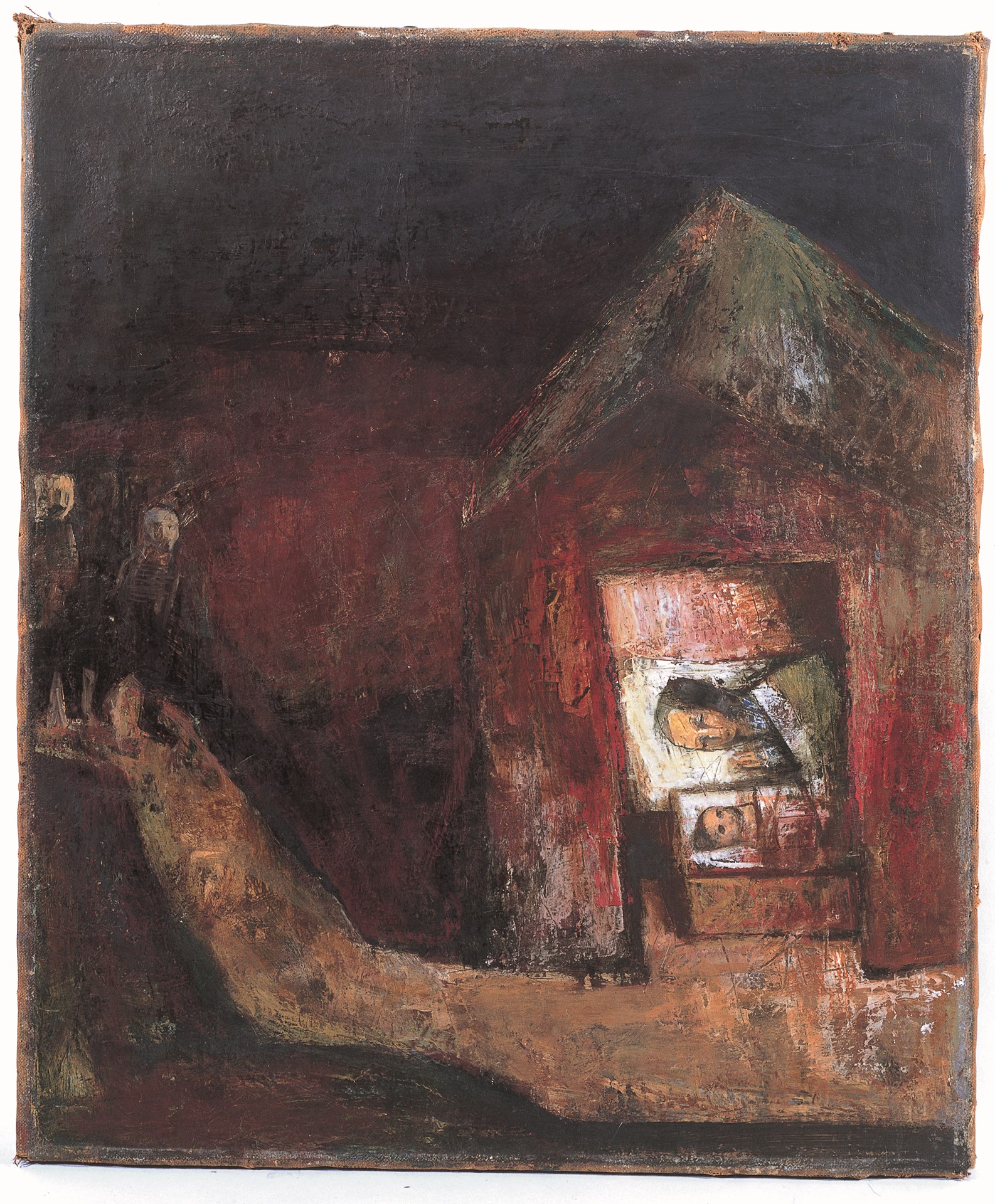Epiphany, January 6th
Matthew 2: 1–2, 11
This is a very dark, rich painting of blues, reds and browns. Herbert shows the three Magi at the extreme left of the painting, not richly dressed as kings, but perhaps rather wise, old men. They make their way along the track leading to the simple, four-square gabled stable where the baby Jesus in his manger is shown with Mary in a well-lit glowing interior. Epiphany, January 6th, is one of the six festivals that structure the Church year. In the Eastern Church, it celebrates the baptism of Jesus while in the Western Church it is concerned with the manifestation of Jesus to the Gentiles through the Magi’s worship of the baby Jesus.
Methodist Modern Art Collection
HERB/1962
6 January
Isaiah 60:1-6 (The ingathering of the dispersed)
“Nations shall come to your light, and kings to the brightness of your dawn.” (v. 3)
Background
The feast of the Epiphany is when we remember the visit of the wise men to the Christ child and this is why this passage is set for today: here are references to the gifts of the wise men; here is explained the presence of camels in the nativity scenes that we have just packed away; here the Gentile (non-Jewish) nations pay homage, prefiguring the universal salvation offered in Jesus Christ (verse 6). Here too is soaring poetry that draws on images of light and dark, of glory and brightness, of gathering and radiant restoration – images that have funded the Christian imagination over the centuries as it has tried to articulate the scope and impact of Christ’s incarnation.
The word ‘epiphany’ means manifestation or appearance or realisation that God is amongst us. In its original context this exhortation of Isaiah’s was addressed not to those who expected a Christ-child, but to those who had returned to Jerusalem after the exile. Scholars mostly believe that the last 11 chapters of Isaiah belong not to the period of the Babylonian exile like chapters 40-55, nor to the 8th century BC like much of the early part of Isaiah. Although here, the hopes expressed are in continuity with those of the previous chapters, Third Isaiah is addressing a new context in which a new community has been gathered and now needs to rebuild the heavenly city.
This is not only a matter of rebuilding the walls and the temple, however. In the chapters prior to this one there are sharp words for those who fail to keep the Sabbath, who get drunk and who keep religious festivals but fail to see justice done for the poor. Rebuilding the heavenly city, therefore, becomes not about bricks and mortar so much as being about obeying God’s commandments to clothe the naked, feed the hungry and break the bonds of injustice.
Celebrating the feast of the Epiphany might draw upon the imagery of Third Isaiah but it needs not only to enjoy the dazzling light but to engage with the Christ, who in continuity with the God of the restoration, brings good news to the poor.
To Ponder
- Which of the images of restoration in this passage do you find most powerful?
- What hymns and songs can you think of that draw on the imagery of this passage?
- What do you think is the relationship between breaking the bonds of injustice and God’s glory?


